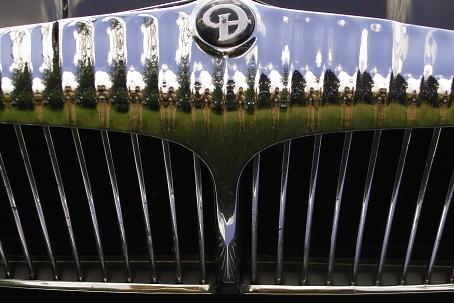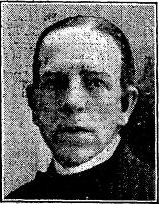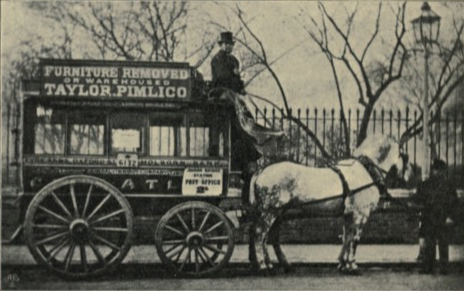|
City Of Oxford Motor Services
Oxford Bus Company is the trading name of The City of Oxford Motor Services Ltd. Company Number 91106 It is a bus operator serving the city and surrounding area of Oxford, England. It is a subsidiary of the Go-Ahead Group. History Horse trams and horse buses The City of Oxford and District Tramway Company served Oxford with horse-drawn trams from 1881. By 1898 its network served Abingdon Road, Banbury Road, Cowley Road, Walton Street and both and railway stations. Horse bus services developed to complement the tramway network. By the early 20th century both Iffley Road and Woodstock Road were horse bus routes. On Saturdays only there were horse buses from Headington to the city centre and from Cowley village to the tram terminus in Cowley Road. In 1906 the City of Oxford Electric Traction Company took over from the City of Oxford and District Tramway Company. It planned to electrify and expand the network, but was defeated by local opposition. Motor buses In 1913–14, ... [...More Info...] [...Related Items...] OR: [Wikipedia] [Google] [Baidu] |
Wright StreetDeck
The Wright StreetDeck is an integral double-decker bus that was manufactured by Wrightbus from 2014, originally delivered as standard with a Daimler OM934 diesel engine. Hybrid-electric, full-electric and hydrogen-powered variants have subsequently been produced. Demonstrators and prototypes were placed in service by Arriva Derby, Arriva London, First Greater Manchester, First South Yorkshire, London Central and Transdev in Harrogate in 2014 and 2015.Wright Streetdeck BusLists on the Web The first production examples entered service with in 2015. [...More Info...] [...Related Items...] OR: [Wikipedia] [Google] [Baidu] |
Abingdon Road
Abingdon Road is the main arterial road to the south of the city of Oxford, England. The road passes through the suburbs of Grandpont and New Hinksey. It is named after the town of Abingdon to the south. History Part of the road was known as the ''Causey'' or ''Causy'' until the 17th century, after the Grandpont causeway that ran from St Aldate's to Hinksey Hill. Location To the north, the road crosses the River Thames at Folly Bridge and becomes St Aldate's, which leads to the centre of Oxford at Carfax, although the one-way system now prevents traffic from taking a direct route. The road is designated the A4144 and joins with the A423 dual carriageway that forms part of the Oxford Ring Road to the south. At its southern end, the road turns sharply to the west and is known as Old Abingdon Road, crossing the Cherwell Valley railway line over a brick bridge to the south of which is the site of the former Abingdon Road Halt railway station. The bridge is known locally as th ... [...More Info...] [...Related Items...] OR: [Wikipedia] [Google] [Baidu] |
Oxford Mail
''Oxford Mail'' is a daily tabloid newspaper in Oxford, England, owned by Newsquest. It is published six days a week. It is a sister paper to the weekly tabloid ''The Oxford Times''. History The ''Oxford Mail'' was founded in 1928 as a successor to ''Jackson's Oxford Journal''. From 1961 until 1979 its editor was Mark Barrington-Ward. At that time it was owned by the Westminster Press, and was an evening newspaper. The ''Oxford Mail'' is now published in the morning. In the second half of 2008 its circulation fell to 23,402, by 2013 it had fallen to 16,569, a year-on-year decline of 5.6% By the second half of 2014, its circulation had fallen to 12,103. In the period July to December 2015, the paper's circulation fell again, to 11,173. In January to June 2016, a further decline to 10,777 was recorded, an 8.4% fall in year-on-year. The latest published circulation was 6,015 (July - December 2021). Notable former staff * Morley Safer * Sir David Bell David Bell may refer to: ... [...More Info...] [...Related Items...] OR: [Wikipedia] [Google] [Baidu] |
Motor Bus
A bus (contracted from omnibus, with variants multibus, motorbus, autobus, etc.) is a road vehicle that carries significantly more passengers than an average car or van. It is most commonly used in public transport, but is also in use for charter purposes, or through private ownership. Although the average bus carries between 30 and 100 passengers, some buses have a capacity of up to 300 passengers. The most common type is the single-deck rigid bus, with double-decker and articulated buses carrying larger loads, and midibuses and minibuses carrying smaller loads. Coaches are used for longer-distance services. Many types of buses, such as city transit buses and inter-city coaches, charge a fare. Other types, such as elementary or secondary school buses or shuttle buses within a post-secondary education campus, are free. In many jurisdictions, bus drivers require a special large vehicle licence above and beyond a regular driving licence. Buses may be used for scheduled bus ... [...More Info...] [...Related Items...] OR: [Wikipedia] [Google] [Baidu] |
Daimler Company
The Daimler Company Limited ( ), prior to 1910 The Daimler Motor Company Limited, was an independent British motor vehicle manufacturer founded in London by H. J. Lawson in 1896, which set up its manufacturing base in Coventry. The company bought the right to the use of the Daimler name simultaneously from Gottlieb Daimler and Daimler-Motoren-Gesellschaft of Cannstatt, Germany. After early financial difficulty and a reorganisation of the company in 1904, the Daimler Motor Company was purchased by Birmingham Small Arms Company (BSA) in 1910, which also made cars under its own name before the Second World War. In 1933, BSA bought the Lanchester Motor Company and made it a subsidiary of Daimler Company. Daimler was awarded a Royal Warrant to provide cars to the British monarch in 1902; it lost this privilege in the 1950s after being supplanted by Rolls-Royce. Daimler occasionally used alternative technology: the Knight engine which it further developed in the early twenti ... [...More Info...] [...Related Items...] OR: [Wikipedia] [Google] [Baidu] |
Frank Gray (politician)
Francis James Gray (31 August 1880 – 2 March 1935) was a British politician and welfare campaigner. He served as a Liberal Member of Parliament for Oxford from 1922 to 1924. Background He was born in Oxford and educated at Rugby School. Career He was admitted as a solicitor in 1903; he retired from law in 1916, and entered the Army. He refused a commission, and served as a private soldier in the Oxfordshire and Buckinghamshire Light Infantry and The Princess Charlotte of Wales's (Royal Berkshire Regiment) until the Armistice. In 1920 he published ''The Confessions of a Private''. After the war, he worked as a farm labourer, lived with Warwickshire miners, and toured the workhouses of Oxfordshire as a tramp. He wrote the book ''The Tramp: his Meaning and Being'' (London: Dent, 1931). Politics In the 1918 general election he contested Watford. He was elected as the MP for Oxford in the 1922 general election He was made a Liberal whip. He was re-elected in 1923; ... [...More Info...] [...Related Items...] OR: [Wikipedia] [Google] [Baidu] |
William Morris, 1st Viscount Nuffield
William Richard Morris, 1st Viscount Nuffield, (10 October 1877 – 22 August 1963) was an English motor manufacturer and philanthropist. He was the founder of Morris Motors Limited and is remembered as the founder of the Nuffield Foundation, the Nuffield Trust and Nuffield College, Oxford, as well as being involved in his role as President of BUPA in creating what is now Nuffield Health. He took his title from the village of Nuffield, Oxfordshire, Nuffield in Oxfordshire, where he lived. Initially Morris Motors relied heavily on Oxford's local labour force, and William Morris became the largest employer in the city. However during the 1920s and 1930s, Oxford saw a dramatic size and population increase following large numbers of unemployed people from depressed areas of Britain seeking work in Morris's factories. This time period was marked with frequent attempts of industrial action protesting against the low pay and poor working conditions in Morris's factories. The first su ... [...More Info...] [...Related Items...] OR: [Wikipedia] [Google] [Baidu] |
Cowley, Oxfordshire
Cowley () is a residential and industrial area in Oxford, England. Cowley's neighbours are Rose Hill and Blackbird Leys to the south, Headington to the north and the villages of Horspath and Garsington across fields to the east. Internationally, Cowley is best known for its automotive industry - historically it was the home of the car manufacturer Morris (later absorbed into British Leyland, then the Rover Group), which has now evolved into Mini. History The Cowley area has been inhabited since Roman times. The line of a Roman road runs north-south along the eastern edge of Cowley. It linked a Roman town at Dorchester-on-Thames with a Roman military camp at Alchester near Bicester. A road called Roman Way follows part of its route. It is behind the Mini car factory, starting opposite the Stagecoach in Oxfordshire bus garage. Cowley coalesced from the former villages of Middle Cowley, Temple Cowley and Church Cowley (around St James church), though the ancient parish of Cowle ... [...More Info...] [...Related Items...] OR: [Wikipedia] [Google] [Baidu] |
Headington
Headington is an eastern suburb of Oxford, England. It is at the top of Headington Hill overlooking the city in the Thames valley below, and bordering Marston to the north-west, Cowley to the south, and Barton and Risinghurst to the east. The life of the large residential area is centred upon London Road, the main road between London and Oxford. History The site of Headington shows evidence of continued occupation from the Stone Age, as the 2001 field excavations in Barton Lane found, suggesting a date in the 11th century BC. Pottery was found on the Manor Ground, suggesting an Iron Age settlement there in the 7th century BC. Roman kilns from about 300 have been found, including one now on display at the Museum of Oxford. Anglo-Saxon burial remains from about 500 have also been discovered. Headington's toponym is derived from the Old English ''Hedena's dun'', meaning "Hedena's hill", when it was the site of a palace or hunting lodge of the Kings of Mercia. In a charter of 1 ... [...More Info...] [...Related Items...] OR: [Wikipedia] [Google] [Baidu] |
Woodstock Road, Oxford
Woodstock Road is a major road in Oxford, England, running from St Giles' in the south, north towards Woodstock through the leafy suburb of North Oxford. To the east is Banbury Road, which it meets at the junction with St Giles'. Buildings At the southern end, just north of Little Clarendon Street, are the Oratory Church of St Aloysius Gonzaga and Somerville College. Opposite Little Clarendon Street is St Giles' Church, built in 1120 and consecrated in 1200. Further north are Green Templeton College, St Anne's College and St Antony's College. Also on Woodstock Road is St Philip and St James Church, now the Oxford Centre for Mission Studies (OCMS) and St. Edward's School which is a prominent feature halfway down. Woodstock Road Baptist Church is an evangelical church on the corner with Beech Croft Road. Jack FM and Jack 2, local radio broadcasters covering Oxfordshire, are based at 270 Woodstock Road, along with the local TV channel SIX TV. The road is classified ... [...More Info...] [...Related Items...] OR: [Wikipedia] [Google] [Baidu] |
Iffley Road
Iffley Road is a major arterial road in Oxford, England. It leads from the Plain, near Magdalen Bridge, southeast towards the village of Iffley. While it becomes Henley Avenue at Iffley Turn, and then Rose Hill, the whole stretch from the ring road to the Plain is referred to by some as Iffley Road. Formerly named as Henley Road in the 19th century, as it leads towards Henley-on-Thames, this entire route is designated the A4158. The road is the location for the Oxford University athletics venue, the Iffley Road Track, where Roger Bannister was the first person to run a mile in under four minutes, on 6 May 1954. The feat is commemorated by blue plaque on Iffley Road. The track is next door to Iffley Road rugby ground, home of Oxford University Rugby Football Club. Also in Iffley Road is Greyfriars, a Capucin priory that was formerly a permanent private hall of the University of Oxford. The Oxford Centre for Animal Ethics is based at 91 Iffley Road, and the headquarters of ... [...More Info...] [...Related Items...] OR: [Wikipedia] [Google] [Baidu] |
Horsebus
A horse-bus or horse-drawn omnibus was a large, enclosed, and sprung horse-drawn vehicle used for passenger transport before the introduction of motor vehicles. It was mainly used in the late 19th century in both the United States and Europe, and was one of the most common means of transportation in cities. In a typical arrangement, two wooden benches along the sides of the passenger cabin held several sitting passengers facing each other. The driver sat on a separate, front-facing bench, typically in an elevated position outside the passengers' enclosed cabin. In the main age of horse buses, many of them were double-decker buses. On the upper deck, which was uncovered, the longitudinal benches were arranged back to back. Similar, if smaller, vehicles were often maintained at country houses (and by some hotels and railway companies) to convey servants and luggage to and from the railway station. Especially popular around 1870–1900, these vehicles were known as a 'private omni ... [...More Info...] [...Related Items...] OR: [Wikipedia] [Google] [Baidu] |









